
Lisa Morton is an acclaimed horror writer whose story ‘Tested’ won the Bram Stoker Award for Best Short Fiction .Her first novella ‘The Lucid Dreaming’ went on to win the Bram Stoker Award for Best Long Fiction. Morton has also had an extensive career in the film industry, In 1979 she worked as a modelmaker on Star Trek: The Motion Picture. In 1988 she co-wrote, with make-up effects expert Tom Burman, Life On the Edge, which was later re-titled Meet the Hollowheads; she also served as an Associate Producer on the film, and received an acting credit as “the Edge Slut” (in a scene that was cut from the film). The film went on to win the Grand Prix Award at the London Odeon Film Festival, and was one of 12 films selected to appear in the Avoriaz Film Festival. She has also authored four non-fiction books, including Witch Hunts, which she co-authored with Rocky Wood.
Lisa met me at The Slaughterhouse, where we talked about horror and technology.
If Philip K Dick were alive today what type of horror story do you think he would write if he turned his hand to it?
Ahh, I see you’ve found one of my major weaknesses! Yes, I’ve been a Dickhead for a number of decades now.
I think PKD would have been absolutely fascinated by the internet. Some of his work like UBIK or the short story “The Days of Perky Pat” suggested an alternate reality that characters might slip into and co-exist in, and I think he might have felt the internet came close to approximating that same sort of alternate reality. I could easily see him leaving a string of crazy Facebook posts and exploring (at least once) sites like Second Life, which I suspect he might have found both exhilarating and disturbing. I don’t think it’s at all difficult to imagine some PKD fiction in which characters who spend too much time online begin to lose their identities or suffer other horrible crises.
On the other hand, it’s entirely possible that PKD might have become more political as well – one of his last books, RADIO FREE ALBEMUTH, is also possibly his most overtly political book, picturing an America united under a fake conspiracy created by a fascist president. He would have been utterly horrified by the new extremism of the right wing, and I could easily see him having created more stories like his terrifying short “Faith of Our Fathers”.
Do you think it’s possible to write a new form of horror fiction?
Absolutely. The most obvious recent examples that come to mind immediately include Mark Z. Danielewski’s HOUSE OF LEAVES and Toby Barlow’s SHARP TEETH, but I think something like Gillian Flynn’s books – SHARP OBJECTS and DARK PLACES – fit that description because of the way she’s meshing psychological horror, mystery, and the mainstream novel. In the world of the small press, John R. Little’s MIRANDA was certainly something we hadn’t seen before – a combination of horror and time travel story, and told in reverse to boot – as was Michael Louis Calvillo’s I WILL RISE, which merged stream-of-consciousness storytelling to dark humor and apocalyptic horror.
Who are your literary influences?
I’m going to forego the usual list here and just go for the two biggest: 1) When I was 15, I saw THE EXORCIST, and by the time I walked out of the theater I knew I wanted to be a writer; and 2) reading Dennis Etchison’s collection THE DARK COUNTRY in the early ’80s made me realize that I could write the sort of horror fiction I’d been thinking about and possibly even sell that fiction. Dennis remains one of my favorite writers, and I consider myself extraordinarily fortunate to now be able to call him a friend.
Tell us about your new book.
 The most recently released is a non-fiction graphic novel (no, that’s not an oxymoron!) called WITCH HUNTS: A GRAPHIC HISTORY OF THE BURNING TIMES, co-written with Rocky Wood and illustrated by Greg Chapman, and published by McFarland and Co. It’s a history of the European and American witch trials, told in graphic novel format. We give special emphasis to such key events as the creation of the MALLEUS MALEFICARUM (the notorious ‘Witch Hunter’s Bible’), the Scottish North Berwick trials (in which the central figure was King James himself), Joan of Arc, the infamous ‘Witchfinder General’ Matthew Hopkins, and of course the Salem Witch Trials. Even for a seasoned horror writer, it was frequently uncomfortable to write – when you study the real history behind the tortures and methods of execution they used to apply, it’s enough to make anyone squirm.
The most recently released is a non-fiction graphic novel (no, that’s not an oxymoron!) called WITCH HUNTS: A GRAPHIC HISTORY OF THE BURNING TIMES, co-written with Rocky Wood and illustrated by Greg Chapman, and published by McFarland and Co. It’s a history of the European and American witch trials, told in graphic novel format. We give special emphasis to such key events as the creation of the MALLEUS MALEFICARUM (the notorious ‘Witch Hunter’s Bible’), the Scottish North Berwick trials (in which the central figure was King James himself), Joan of Arc, the infamous ‘Witchfinder General’ Matthew Hopkins, and of course the Salem Witch Trials. Even for a seasoned horror writer, it was frequently uncomfortable to write – when you study the real history behind the tortures and methods of execution they used to apply, it’s enough to make anyone squirm.
How do you think horror differs from terror?
I’m a big fan of traditional Gothic literature, and the 19th-century Gothic writers drew a very clear distinction between horror and terror – terror was an emotion that could only be produced through true art, but horror was vulgar to them. Well, of course, that was nearly 200 years ago, and definitions have changed; at this point, most readers and authors would probably tell you there’s no real distinction. However, I certainly agree with the notion that too much of modern horror IS vulgar and doesn’t rely on any art whatsoever. I would probably have been right at home having a chat with Ann Radcliffe and Horace Walpole!
What are you working on now?

Catching up on fiction again after finishing two non-fiction books (Witch Hunts: A Graphic History of the Burning Times and Trick or Treat?: A History of Halloween) just finally this last week. Those have eaten my life for the last year, and I’m itching to get back into fiction now. I owe short stories to a lot of books (including several that have graciously extended my deadlines), I have a Halloween-themed novella to work on, and then someday I hope to write another novel. And for me, there’s always the siren song of Hollywood (meaning: screenwriting) lurking in the near distance…
If you could take back any moment and put it into literature what would it be?
Not sure if you mean from my own life or all of history…well, because I’m a person with almost no regrets, I’ll choose a moment from history that I’ve spent years trying to think up a literary context for: The moment when Georges Melies, the French genius who I think basically invented the art of filmmaking, set fire to his library of films. The apocryphal story is that he was furious over discovering that Edison had bootlegged his film A TRIP TO THE MOON in the United States and made a considerable amount of money with it. Melies probably made around 800 films, but as a result of his action we’ve lost most of those. Melies himself gave up filmmaking after that, and spent the rest of his life selling toys from a stall in a Paris Metro station. That idea – of an artist who has essentially invented an entire new art form (Melies was one of the first to use the new medium to tell a story, he was one of the first to think of cutting different pieces together, and he basically created cinematic special effects) disowning it because it’s been claimed from them by deceitful entrepreneurs – has haunted me ever since I first read about it. Some day I WILL use that scene in something…
If you were to give advice to yourself as a younger woman what would you say?
I would say, “Stop dating actors,” except…I ended up living happily ever after with one!
Do you see horror changing as technology does?
Well, yes and no. No, because horror is one of the most basic emotions, and so the primary intent of a work of horror will never change. Yes, because all art transforms over the centuries. Look, for example, at the success of Stephen King, which is due mainly to the fact that he removed the 19th-century Gothic trappings from horror and brought it into the modern American suburb.
A lot of contemporary horror already involves technology – look at all the stories of mutations, or post-nuclear holocausts, or rampant viruses. What I’d like to see more of are horror stories that address the sociopolitical landscape. I think it’s really unfortunate that too many horror authors shy away from addressing politics at all, that they hear “politics” and immediately go to “preachy”. That’s ridiculous and very shortsighted. One of the most interesting horror stories I’ve read in years – “Evidence of Love in a Case of Abandonment” by M. Rickert – was a science fiction/horror hybrid about a near future in which fundamentalists have taken over and are staging public executions of women who’ve had abortions. It was powerful and topical and truly horrifying, and I wish there was more work like it out there.
Do you have any dream projects?
A few. I’ve recently come to enjoy a lot of young adult fiction (especially THE HUNGER GAMES trilogy, which is more topical and relevant than any adult fiction I’ve read in years), and I’d like to write in that field. There’s a massive horror/dark fantasy historical trilogy I’d like to write involving a 19th-century monster-fighting British noblewoman (the first volume is already written). And I’d like to put out a collection of movie-themed horror short stories that would chronicle the entire history of cinema around the globe – most of that’s already written, but there are a few stories yet to write for it. Including one about – but of course! – Georges Melies.
Thank you Lisa for an informed and thoughtful interview.
Pick up a copy of Witch Hunts: A Graphic History of the Burning Times from the publisher, McFarland, or from Amazon US or UK.
You can pre-order a copy of Trick or Treat: A History of Halloween at Amazon US or UK.
All Lisa’s works, to include her novel The Castle of Los Angeles, a 2010 Bram Stoker winner, can be found in the upper left menu list on her website or on Wikipedia.


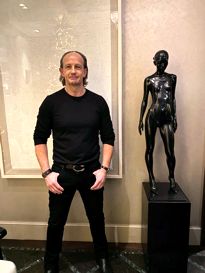
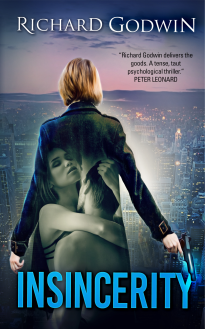
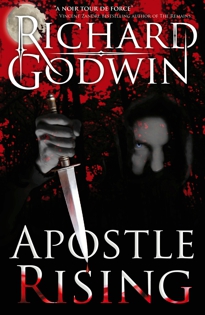
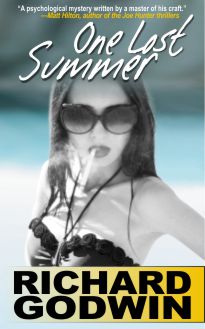
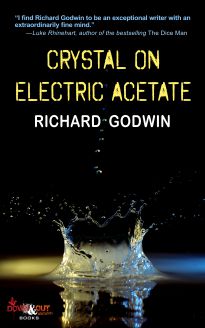
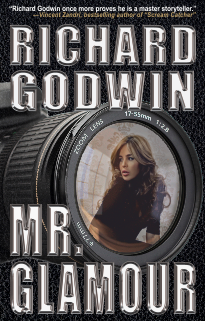
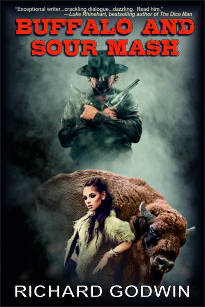
3 Responses to Chin Wag At The Slaughterhouse: Interview With Lisa Morton